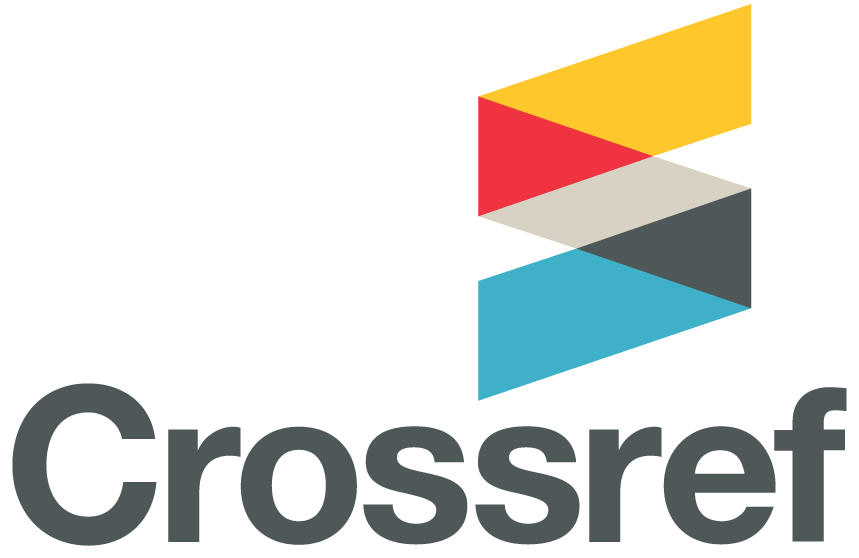Supernumerary Teeth: Cases Series
DOI:
https://doi.org/10.32828/mdj.v20i2.1178Keywords:
hyperdontia, Dental lamina, supernumerary teeth, mesiodens, and radiographic examinationAbstract
Background: Supernumerary teeth can appear anywhere in the oral cavity and are found in addition to standard primary and permanent teeth, both clinical and radiographic examinations usually lead to the diagnosis. Their definite etiology has not yet been completely understood. These teeth either erupt normally or remain impacted which may lead to many clinical complications. This study aimed to present clinical cases with supernumerary teeth including their management strategies.
Methods: Three clinical cases were considered in this study. Case 1: 20 years aged healthy female complained of a hard mass in the nose with a rough texture clinical examination and radio-graphical examination showed a hard mass resembling a tooth was detected on the floor of the nose. The treatment was endoscopic removal of the ectopic tooth which was completely developed, under trans-oral general anesthesia.Case 2: A male child with 9 years old complaining of missing multiple permanent teeth. The specialist observed that the patient had impacted upper laterals on both sides otherwise they weren't visible in the oral cavity. Cone beam computed tomography (CBCT) image showed un-erupted upper lateral incisors, The treatment consisted of surgical removal of supernumeraries under local anesthesia.
Case 3: A healthy 9-year-old male child with a new tooth erupted in the roof of his mouth. A computerized tomography CT scan with clinical examination showed a mesioden between upper centrals. Extraction of mesiodens with nearly 2 cm in length was done under local anesthesia.
Conclusion
Supernumerary teeth may present as single or multiple teeth on one side or both sides of the maxilla and mandible; the favorite site is the premaxilla. When they are identified and diagnosed, they should be managed to prevent future complications, either aesthetic and/or functional problems.
References
References
1. Belmehdi A, Bahbah S, El Harti K, El Wady W. Non syndromic supernumerary teeth: management of two clinical cases. Pan Afr Med J. 2018 Mar 19;29:163.
2. Mallineni SK: Supernumerary teeth: review of the literature with recent updates. Conference Papers in Science. 2014, 10.1155/2014/764050
3. Lu X, Yu F, Liu J, Cai W, Zhao Y, Zhao S, Liu S. The epidemiology of supernumerary teeth and the associated molecular mechanism. Organogenesis. 2017 Jul 3;13(3):71-82. doi: 10.1080/15476278.2017.1332554.
4. Jain P, Rathee M. Anatomy, Head and Neck, Tooth Eruption. 2023 Sep 20. In: StatPearls [Internet]. Treasure Island (FL): StatPearls Publishing; 2024 Jan–. PMID: 31751068.
5. Lubinsky M, Kantaputra PN. Syndromes with supernumerary teeth. Am J Med Genet A. 2016 Oct;170(10):2611-6
6. Hemnani G, Pankey N, Chandak M, Yeluri R, Sontakke PD, Dhanrajani HS. Anterior Maxillary Mesiodens Extraction in a Young Adult Male: A Case Report. Cureus. 2024 Jul 10;16(7):e64208. doi: 10.7759/cureus.64208. PMID: 39130931; PMCID: PMC11315419.
7. Qamar CR, Bajwa JI, Rahbar MI. Mesiodens - etiology, prevalence, diagnosis and management. POJ [Internet]. 2013 Dec. 1 [cited 2024 Dec. 15];5(2):73-6.
8. Mukhopadhyay S. Mesiodens: a clinical and radiographic study in children. J Indian Soc Pedod Prev Dent. 2011 Jan-Mar;29(1):34-8.
9. Kazanci F, Celikoglu M, Miloglu O, Yildirim H, Ceylan I. The frequency and characteristics of mesiodens in a Turkish patient population. Eur J Dent. 2011 Jul;5(3):361-5.
10. Sulabha AN, Sameer C. Unusual Bilateral Paramolars Associated with Clinical Complications. Case Rep Dent. 2015;2015:851765. doi: 10.1155/2015/851765. Epub 2015 May 21.
11. Nayak G, Shetty S, Singh I, Pitalia D. Paramolar - A supernumerary molar: A case report and an overview. Dent Res J (Isfahan). 2012 Nov;9(6):797-803.
12. Cassetta M, Altieri F, Giansanti M, Di-Giorgio R, Calasso S. Morphological and topographical characteristics of posterior supernumerary molar teeth: an epidemiological study on 25,186 subjects. Med Oral Patol Oral Cir Bucal. 2014 Nov 1;19(6):e545-9.
13. Arandi NZ. Distomolars: An overview and 3 case reports Dent Oral Craniofac Res. 2017;4:1–3.
14. Kasat VO, Saluja H, Kalburge JV, Kini Y, Nikam A, Laddha R. Multiple bilateral supernumerary mandibular premolars in a non-syndromic patient with associated orthokeratised odontogenic cyst- A case report and review of literature. Contemp Clin Dent. 2012 Sep;3(Suppl 2):S248-52.
15. Meighani G, Pakdaman A. Diagnosis and management of supernumerary (mesiodens): a review of the literature. J Dent (Tehran). 2010 Winter;7(1):41-9. Epub 2010 Mar 31.
16. Shah N, Bansal N, Logani A. Recent advances in imaging technologies in dentistry. World J Radiol. 2014 Oct 28;6(10):794-807.
17. Lam, E. W. N. (2014). Dental anomalies. In S. C. White, & M. J. Pharoah (Eds.), Oral radiology principles and interpretation (7th ed.), (pp. 582-611).
18. Syriac G, Joseph E, Rupesh S, Philip J, Cherian SA, Mathew J. Prevalence, Characteristics, and Complications of Supernumerary Teeth in Nonsyndromic Pediatric Population of South India: A Clinical and Radiographic Study. J Pharm Bioallied Sci. 2017 Nov;9(Suppl 1):S231-S236
19. Jain S, Raza M, Sharma P, Kumar P. Unraveling Impacted Maxillary Incisors: The Why, When, and How. Int J Clin Pediatr Dent. 2021 Jan-Feb;14(1):149-157.
20. Ata-Ali F, Ata-Ali J, Peñarrocha-Oltra D, Peñarrocha-Diago M. Prevalence, etiology, diagnosis, treatment and complications of supernumerary teeth. J Clin Exp Dent. 2014 Oct 1;6(4):e414-8.
21. Jiang Q, Xu GZ, Yang C, Yu CQ, He DM, Zhang ZY. Dentigerous cysts associated with impacted supernumerary teeth in the anterior maxilla. Exp Ther Med. 2011 Sep;2(5):805-809.
22. Parolia A, Kundabala M, Dahal M, Mohan M, Thomas MS. Management of supernumerary teeth. J Conserv Dent. 2011 Jul;14(3):221-4.
23. Omer RS, Anthonappa RP, King NM. Determination of the optimum time for surgical removal of unerupted anterior supernumerary teeth. Pediatr Dent. 2010 Jan-Feb;32(1):14-20. PMID: 20298648.
24. Jiboon AT, Alsheakh AJ, Alhamdani F, Hussein M, Waleed Z, Saad T. The necessity of radiographic investigation before dental extraction from a student’s perspective. Asian J Oral Health Allied Sci 2022;12:11.
25. Talib Jiboon A, Alhamdani FY, Hussein Ali N. Radiographic Examination before Dental Extraction from Dentists' Perspective. Int J Dent. 2023 Mar 22;2023:4970981. doi: 10.1155/2023/4970981. PMID: 37006963; PMCID: PMC10060071
26. Mohammed A. Distribution and prevalence of various developmental dental anomalies in Iraqi population: a radiographic study Mustansiriya Dent J. 2017;14:137–146
27. Leco Berrocal MI, Martín Morales JF, Martínez González JM. An observational study of the frequency of supernumerary teeth in a population of 2000 patients 2007;12:E134-8.
28. Khan MI, Ahmed N, Neela PK, Unnisa N. The Human Genetics of Dental Anomalies. Glob Med Genet. 2022 Feb 25;9(2):76-81.
29. HFd O, Vieira MB, Buhaten WM, Neves CA, Seronni GP, Dossi MO. Tooth in nasal cavity of nontraumatic etiology: uncommon affection Int Arch Otorhinolaryngol. 2009;13:201–3.
30. Kim D.H., Kim J.M., Chae S.W. , Hwang S.J., Lee S.H., Lee H.M.. Endoscopic removal of an intranasal ectopic tooth. Int J Pediatr Otorhinolaryngol, 67 (2003), pp. 79-81.
31. Kumar V, Bhaskar A, Kapoor R, Malik P. Conservative surgical management of a supernumerary tooth in the nasal cavity. BMJ Case Rep. 2020;13(7):e235718. Published 2020 Jul 28. doi:10.1136/bcr-2020-235718.
32. Gormley M, Chahal R, Gallacher N, Bell C. A conventional surgical approach for removal of an ectopic tooth in the nasal cavity. BMJ Case Rep. 2019;12(8):e231279. Published 2019 Aug 2. doi:10.1136/bcr-2019-231279
Downloads
Published
Issue
Section
Categories
License
Copyright (c) 2024 Noor Natik Raheem, Ahmed Naeem Al-Fattal, Mohamed Sahib Shalal, Lobna K. Al Khafaji4, Yousif Ismail Allawi5

This work is licensed under a Creative Commons Attribution 4.0 International License.
The Journal of Mustansiria Dental Journal is an open-access journal that all contents are free of charge. Articles of this journal are licensed under the terms of the Creative Commons Attribution International Public License CC-BY 4.0 (https://creativecommons.org/licenses/by/4.0/legalcode) that licensees are unrestrictly allowed to search, download, share, distribute, print, or link to the full texts of the articles, crawl them for indexing and reproduce any medium of the articles provided that they give the author(s) proper credits (citation). The journal allows the author(s) to retain the copyright of their published article.
Creative Commons-Attribution (BY)








